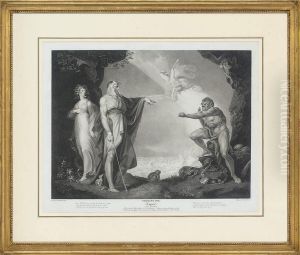Jean Pierre Simon Paintings
Jean Pierre Simon was a French artist, born in 1760 and known for his contributions to the world of painting during a period that spanned the late 18th and early 19th centuries, a time of significant political, social, and artistic upheaval in France. His life and career were inevitably shaped by the events of the French Revolution and the Napoleonic Wars, which provided a dynamic backdrop to his artistic pursuits.
Simon's artistic education and career began in an era when the neoclassical style dominated European art, influenced by the Enlightenment's ideals of reason, classical antiquity, and a new sense of historical consciousness. Trained in the rigorous academic traditions of the time, Simon would have been well-versed in the principles of drawing, composition, and the study of classical and historical subjects. However, little is known about his specific teachers or the exact trajectory of his early training, a common issue when tracing the biographies of less documented artists of the period.
Throughout his career, Jean Pierre Simon worked primarily as a painter, though records of his specific works are scarce, making it difficult to fully assess his style and contributions to the art world. Like many artists of his time, he likely engaged in historical and mythological subjects, portraits, and perhaps even landscapes, catering to the tastes and demands of patrons in a rapidly changing society.
The French Revolution and the subsequent rise and fall of Napoleon had a profound impact on artists of Simon's generation. The shifting political landscape influenced themes, patronage, and opportunities for artists. While some found new opportunities in the promotion of revolutionary ideals or the glorification of Napoleon's regime, others faced challenges as traditional patronage systems were disrupted. The extent to which Simon's work was directly influenced by these events remains a subject of interest for art historians, especially those exploring the intersection of art and politics during this tumultuous period.
Jean Pierre Simon's death in 1814 came at a time when Europe was on the cusp of significant changes, with the fall of Napoleon and the Congress of Vienna reshaping the continent's political boundaries and heralding the Romantic era in art. While Simon's personal legacy may not be as well-documented or celebrated as that of his contemporaries, his life and work offer a fascinating glimpse into the challenges and transformations faced by artists navigating the complex landscape of Revolutionary and Napoleonic France. His contributions, though perhaps less known, underscore the rich tapestry of artistic endeavor during one of Europe's most dynamic periods.
